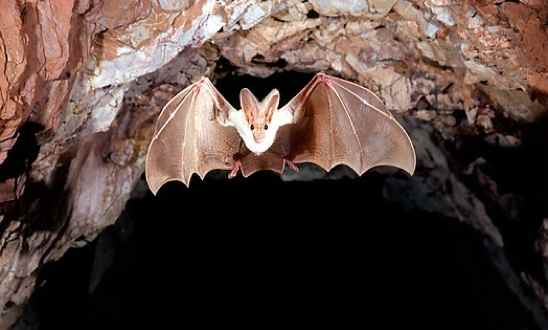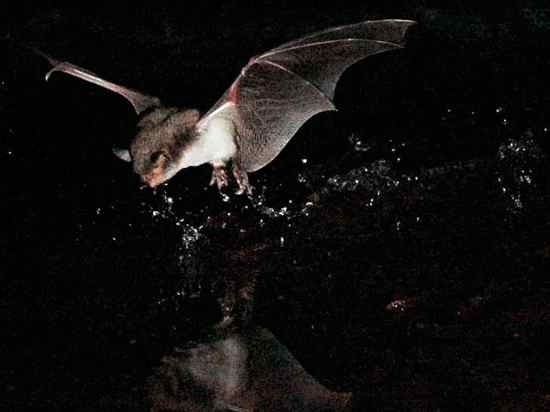 Mysteries
Mysteries  Mysteries
Mysteries  History
History 10 Surprising Stories About the Texas Rangers
 Humans
Humans 10 Philosophers Who Were Driven Mad by Their Own Theories
 Miscellaneous
Miscellaneous 10 Video-Game-Worthy Weapons and Armors from History
 Weird Stuff
Weird Stuff 10 Psychics Who Accurately Predicted Wartime Events
 The Arts
The Arts 10 Pieces of Art Inspired by a Broken Heart
 Health
Health 10 Science Fiction-Sounding New Medical Treatments
 History
History 10 Surprising Facts About the Father of Submarine Warfare
 Space
Space Ten Astonishing New Insights into Alien Worlds
 Weird Stuff
Weird Stuff 10 Bizarre Summer Solstice Rituals Still Practiced Today
 Mysteries
Mysteries Top 10 Haunting Facts About the Ghost Ship MV Alta
 History
History 10 Surprising Stories About the Texas Rangers
 Humans
Humans 10 Philosophers Who Were Driven Mad by Their Own Theories
Who's Behind Listverse?

Jamie Frater
Head Editor
Jamie founded Listverse due to an insatiable desire to share fascinating, obscure, and bizarre facts. He has been a guest speaker on numerous national radio and television stations and is a five time published author.
More About Us Miscellaneous
Miscellaneous 10 Video-Game-Worthy Weapons and Armors from History
 Weird Stuff
Weird Stuff 10 Psychics Who Accurately Predicted Wartime Events
 The Arts
The Arts 10 Pieces of Art Inspired by a Broken Heart
 Health
Health 10 Science Fiction-Sounding New Medical Treatments
 History
History 10 Surprising Facts About the Father of Submarine Warfare
 Space
Space Ten Astonishing New Insights into Alien Worlds
 Weird Stuff
Weird Stuff 10 Bizarre Summer Solstice Rituals Still Practiced Today
Top 10 Bizarre Bats
Bats have long given rise to horror stories (vampire bats), myths and misconceptions (such as blindness). Bats come in all shapes and sizes and are a very interesting and unique creature. This list looks at ten of the most unusual bats around. If you know of any others, be sure to mention them in the comments.

A species exclusive to western Mexico, the banana bat is noted for its very long snout, the longest of any bat (relative to size). It is nectarivorous, which means it feeds mostly on nectar and is an important pollinator in its tropical deciduous forest habitat. It gets its name because it is often found in banana plantations.

This white furred bat is found in tropical rain forests from Mexico to Brazil, and also in the island of Trinidad, in the Caribbean. It is a solitary animal that spends daylight roosting under a palm leaf, and then flies high at night, hunting moths and other flying insects.

This bat is noted for its weird “hairdo”, and for the strange odor males use to attract females during courtship. They are insectivores and live in the rain forests of central Africa.

This fruit eating species is found in Mexico and Central America, where it is known as “murcielago viejito” (“old man bat”) or murcielago zopilote (“vulture bat”), due to its naked, wrinkly face. They have a large flap of skin that they use as a mask to cover their face when they sleep.

These bats feed on flying insects and, just as many other bats, use echolocation to find them. Their enormous ears gives them even better hearing than that of smaller eared bats. They belong to diverse genera and are found in many parts of the world.

This large bat lives in Mexico, Central and South America and feeds mostly on fish. It uses its long clawed feet to grab the fish in the water surface and then feeds on the wing. It has a smaller relative, the Lesser Fishing Bat, that feeds on aquatic insects.

Ghost faced bats are widely spread in the New World, from the southern US to Peru. They practically lack noses, have strange hard skin flaps on their faces and a very prominent forehead which gives them a very weird appearance. They feed on nocturnal insects.

This bat, endemic to Madagascar, was thought to use suction cups on its wings and ankles to attach to palm leaves and other smooth surfaces. Today it is known that they don´t use suction, but rather adhesion, by producing a sticky substance that acts as a glue- the same kind of adhesion found in tree frogs and salamanders.

Found in the Philippines, the tube nosed bat is a critically endangered species found in rain forests. Discovered in 1984, this species is noted for its strangely tubular nostrils and the stripes on its back (very few bats have stripes). They feed mostly on figs and other fruit but may eat insects on occasion.

Found in the rain forests of Africa, this large bat gets its name for the huge, strangely shaped head of the males. Most of the male’s thorax is actually a resonating chamber that allows them to produce very loud calls to attract females. They feed on fruit and, occasionally, on other animals.








